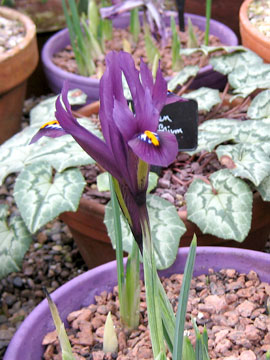Garden Center and Nursery
Buying plants from Garden Centres and Nurseries
Timing is All Important
If you are looking to buy plants for your garden, you want to visit your Garden Centre or Nursery when plants are likely to be at their best. This means that timing is all-important.
Although most Garden Centres do their utmost to keep their plants healthy, it is a fact of life that most plants deteriorate when taken from ideal growing conditions to be displayed in a retail environment.
It follows, therefore, that you want to buy when plants are naturally at their best and at times when turnover of plants is high so that they are unlikely to have been on sale for very long.
For most plants this means visiting your Garden Centre around spring to early summer. Some hardy plants are best transplanted into your garden just before winter so you need to buy these in autumn.
Some Garden Centres and Nurseries that are open to the public grow their own plants but most receive their stock from specialist growers. If possible try to find out their usual delivery times, which is to your advantage because you can time your visit when there is the greatest selection of fresh plants from which to choose.
Know Why You are Buying

Garden Centres know that most people buy plants on impulse. In general, customers are more influenced by the way plants are presented in the store than by their intended location in the garden. Consequently, like supermarkets, Garden Centres set up their displays to attract impulse buyers.
For best results in your garden you need to be aware of these sales techniques and avoid falling prey to them.
Before visiting a Garden Centre or Nursery to buy plants, it is important to decide what you need. This means assessing aspects such as:
- Where you intend to position the plants in your garden. Take account of how much sun, rain and wind that part of the garden gets. The type of soil is important is it acid or alkaline, is it free draining or does it tend to become waterlogged?
- Take account of the height and spread of the mature plant. Don't assume the potted plant as bought is typical of how it will look in a few years time.
- Seasonal display is very important, particularly if you are looking for flowering during winter, for example.
- Decide on the appropriate colour to ensure the new plants will fit in with your existing colour scheme.
It may be exciting to visit a Garden Centre to see what is available and there is no harm in doing so as long as you delay actual buying until after you have given some serious thought to what you really need.
It is worth taking a small notepad with you to write down the full botanical names of any plants that interest you. You can then read up on them at your leisure to ensure they are appropriate and you are fully aware of the care they will need to remain healthy.
Know What You are Buying

When you have decided which species of plant you want for your garden, it is worth taking a few minutes to examine the specimens that are available at the Garden Centre or Nursery.
You want plants that have the best possible chance of survival, which means they must be healthy, well looked after and at the peak of condition.
What to look for varies from species to species but there are some simple checks you can make that apply to almost all plants and will improve tremendously your chances of a good buy.
- Target plants that simply look good. In other words, they give the appearance of being bright and healthy without looking leggy or dowdy.
- Examine the plant for any sign of pests. You will usually find signs on the underside of leaves or around buds or new tender growth. If you find any indication of pests, it is unlikely to be confined to a single plant, so be wary of buying anything that is in close proximity.
- Similarly, watch for signs of disease, which often takes the form of damaged or spotted leaves. The whole plant should have a healthy colour and there should be no signs of drooping. You should also be wary of other plants in close proximity to any that are diseased.
- If you can, examine the roots of the plant. First look underneath the pot to see if the roots are growing through the holes in the bottom, which would indicate that the plant has outgrown the pot. If you are able to do so, it is also worth carefully turning the plant over and releasing it from the pot so that you can examine the roots more closely. They should be white or creamy in colour and should not be growing in circles around the inside of the pot, which would indicate the plant has is pot bound. Plants that have been allowed to become pot bound are usually more difficult to get established after they have been transplanted.
- Also examine the growing medium, which should not be too dry or too wet. If the plant has been cared for properly, the compost should be just damp.
Making these few checks will improve your chances enormously of buying plants that will establish well in your garden.
Read more about Garden Centres |
Read more about Plants |
